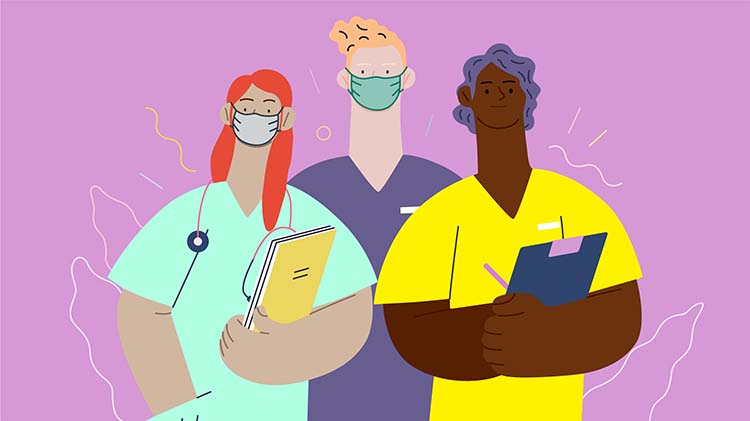Checking to Save Lives
11 Jun 2012
There has been much discussion around the introduction of the WHO Surgical Safety Checklist1 and, as
Dr Patrick Lockie discovered, anecdotal evidence would still suggest considerable reluctance from surgeons.
Pronovost’s work2 at Johns Hopkins ten years ago using a checklist and a “care bundle” for insertion of central lines, was the first well publicised medical checklist. Since then the results of use of other checklists have been published, 3-6 and all have shown reduction of error and improved patient outcomes. Despite the seemingly incontrovertible evidence, use of checklists throughout medicine remains scant even within those institutions of recognised checklist “champions” (Gawande, personal communication).
The following is a selection of some of the studies published in the last few years.
|
Author/Study |
Year |
Checklist |
Outcome |
| Pronovost2 | 2004 | As part of Central Line Insertion Bundle | Reduction in Central Line associated infections from 11.3 per 1000 catheter days to zero. |
| Catchpole3 | 2007 | Handover from Surgery to ICU | Technical and information errors reduced by approx half. |
| Keystone4 | 2006 | Insertion of Central Lines | Rate of blood infection reduced from 2.7 per 1000 catheter days to zero. |
| Gawande1 | 2009 | WHO Surgical Safety | Death rate reduced 1.5% to 0.8%. Complication rate reduced 11% to 7%. |
| Joy5 | 2011 | Handover from Cardiac Surgery to ICU | Technical error reduction from 6.5 to 1.5. Critical information permission errors reduced from 6.3 to 2.8 (per handover). |
| Bingisser6 | 2010 | Handover in Emergency Department |
50% reduction in duration of handover. Information errors reduced from 194/496 patients to 78/470. |
There has not been any published evidence of a negative outcome from the introduction of a checklist or standardised protocol. There have however been warnings, and a recent publication7 indicating that introduction of a checklist alone is not sufficient and that prompting the use of any checklist and review of the items on the list is necessary. Pronovost agrees checklists alone are a weak intervention when not accompanied by effective removal of barriers to their use.
Gawande has proposed reasons for ambivalence or even active opposition towards checklists in medicine. Loss of independent thought and initiative have been cited, as has supposed doctor subservience to nursing staff Checking to Save Lives (who usually run the checklists). In situations of critical decision making a checklist might lessen what Gawande calls “expert audacity”, a trait of early test pilots, and some surgeons I know. As flying became safer, it probably became less interesting for top gun pilots.
Others have proposed financial reasons as a barrier as there is no industry incentive to promote these initiatives. To quote Gawande (with my interpretation):
If someone found a new drug that could wipe out infections with anything remotely like the effectiveness of Pronovost’s lists, there would be television ads with Shane Warne extolling its virtues, and detail men offering free lunches to get doctors to make it part of their practice.
Discussion of checklists usually evoke one of the following responses:
a) I have never had a problem and don’t see the need. b) Things are different in USA/UK/at my hospital. c) It should help the nursing staff but doctors don’t need to use a checklist. d) Takes too long.
None of these objections are legitimate. (b), if true, would apply to any clinical study from overseas and other hospitals, and most checklists reduce time spent on handovers. I suspect reassurance from the pilot on your next flight that he had never had a crash, and therefore didn’t need to use his take-off checklist would see you quickly leaving the aircraft, so (a) doesn’t stand up either.
Non-medical people are increasingly aware of the usefulness of checklists in medicine. Nevada legislators went as far as passing a law in 2011, requiring patient safety committees to create and introduce checklists to improve safety. Quality committee members will be pleased to hear that financial penalties, not incarceration, apply for non-compliance.
In view of the published evidence it might also in future become difficult to defend a procedural error if a relevant checklist has not been utilised.
1 Haynes AB, Weiser TG, Berry WR, Lipsitz SR, Breizat AS, Dellinger EP, et al. A Surgical Safety Checklist to Reduce Morbidity and Mortality in a Global Population. NEJM. 2009;360:491-9.
2 Berenholtz SM, Pronovost PJ, Lipsett PA, Hobson D, Earsing K, Farley JE, et al. Eliminating catheter-related bloodstream infections in the intensive care unit. Crit Care Med. 2004; 32:2014-20.
3 Catchpole KR, De leval MR, McEwan A, Pigott N, Elliot MJ, McQuillan A, et al. Patient handover from surgery to intensive care: using Formula 1 pit-stop and aviation models to improve safety and quality. Pediatric Anesthesia. 2007; 17: 470–8.
4 Pronovost P, Needham D, Berenholtz S, Sinopoli D, Chu H, Cosgrove S, et al. An Intervention to Decrease Catheter-Related Bloodstream Infections in the ICU. NEJM. 2006; 355 :2725-32.
5 Joy BF, Elliott E, Hardy C, Sullivan C, Backer CL, Kane JM. Standardized multidisciplinary protocol improves handover of cardiac surgery patients to the intensive care unit. Pediatr Crit Care Med. 2011; 12:304-8.
6 Rüdiger-Stürchler M, Keller DI, Bingisser R. Emergency physician intershift handover – can a dINAMO checklist speed it up and improve quality? Swiss Med Wkly. 2010; 24;140:w13085.
7 Weiss CH, Moazed F, McEvoy CA, Singer BD, Szleifer I, Amaral L, et al. Prompting Physicians to Address a Daily Checklist and Process of Care and Clinical Outcomes: A Single-Site Study. Am J Respir Crit Care Med. 2011; 15;184:680-6.
Professional boundaries in healthcare - Part 1
Boundaries with patients present in numerous ways every day and all health practitioners
11 Aug 2025
Understanding Professional Medical Indemnity Insurance
Do you understand the ins and outs of professional medical indemnity insurance?
11 Aug 2025
Professional boundaries in healthcare - Part 2
Boundaries with patients present in numerous ways every day and all health practitioners
11 Aug 2025
Understanding changes to the Fair Work Act
What are the changes to the Fair Work Act and what is my role?
22 Jul 2025







